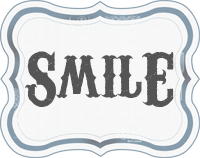I went the complete self-publishing route this time, which means that I had to hire people myself to do the editing, cover design and interior formatting. Alicia and Perry were a huge help to me in these areas!!
Once I have approved the book and it is ready to go, I will reveal the lovely cover Perry designed for me!
For now, here is a short excerpt from Chapter 17.
When I felt she was ready, I tossed the rope toward her, keeping hold of one end. She immediately started cantering.
I kissed to her and trotted to keep up, coiling the rope as I moved before throwing it again.
It landed closer to her this time, and she gave a little squeal as she jumped ahead to avoid it.
This was the beginning step of join-up. Since horses are prey animals, when I put pressure on her and made myself to be bigger than her, she ran from me. I can't kick or bite her like another horse would to assert dominance, so by chasing her off and denying her access to me, eventually she will ask to have a relationship with me and will join-up. The rope is basically an extension of my arm and, to her, it's like another horse kicking her.
A horse's flight distance is usually about a quarter mile. After that distance, they will turn and face whatever frightened them and determine whether it really was a threat or whether it is still there at all.
When they are in disgrace with the alpha horse, they are chased from the herd and made to stay away until they show signs of submission. They are more vulnerable when away from the herd, so they usually come around fairly quickly, eager for the security of authority.
During join-up, you are letting the horse know that you are the alpha and also teaching them that you don't want to hurt them and letting them know they can trust you.
The mare didn't like the fact that I was telling her what to do, but I could see her relaxing as she realized I wasn't going to hurt her and also finding security in my authority.
After ten minutes of keeping the mare moving constantly, I saw her inside ear turn and lock onto me, the first sign that she was beginning to submit. Up until now, her ears had been flickering back and forth, but now that it had locked on me, I knew that she was concentrating.
As she loped around the pen, I marveled at how beautiful she was. Her silver coat glistened in the sun, and her dainty head and intelligent eyes drew me in. Underneath that stunning exterior lay a beautiful heart, just waiting for someone to notice and help it blossom.
It was a warm day, and the mare was sweating heavily. I prefer to do join-up when it is cool in the early morning or evening, but Dad had always told me, "When you feel the time is right, go for it." A lot of working with horses is about feelings. You can only have so much head knowledge; the rest comes from the heart. Dad says that is what separates the great trainers from the rest. They follow their heart, not their head.
I kept her moving, pushing for more speed. She was totally confused, but I could see the wheels turning. She was thinking hard.
Her muscles were tense and she was ready to fight if needed. I had to be careful not to push her hard enough to make her attack me, but just enough that I accomplished my goal.
Fifteen minutes had passed since we started, and I saw her head drop slightly. The head dropping is the next step. When a horse has its head lowered, for eating or drinking, it is more vulnerable to predators. For a horse to lower its head for you means it not only trusts you, but also accepts your authority.
I was breathing hard and sweating myself now, but I kept her moving. Gradually her head came down even further.
When it was level with her body, I saw her tongue flick out and her jaw moved as she licked and chewed while continuing to lower her head.
Licking and chewing is the last thing a horse does to tell you they are ready to join-up. Whenever you see an alpha horse scolding another, the horse being punished always licks and chews, as well as drops their head. Young horses will clack their teeth in submission.
I didn't feel she was quite ready so I kept pushing until her nose was almost touching the ground.
We had only been at it for about twenty-five minutes. Some horses don't take that long, others take much longer. I had expected her to go a lot longer because of her history, but she was surprising me once again.
The mare was being very clear with her signals, so, dropping the rope to the ground, I turned around.
And you can enter to win a free copy of my book, Rustlers and the Texas Trail, on Keri's blog by clicking here.

 RSS Feed
RSS Feed









